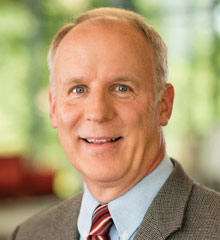In the first two of these articles, we looked some of the general findings of a major new survey by the Pew Forum on Religion and Public Life regarding religious attitudes among Americans.
The findings so far would suggest a number of conclusions that might seem a bit contrary: though the vast majority of Americans find religion to be very important to their public and private lives, they feel free to disagree with their religious denominations whenever they themselves hold a contrary view. Religious claims to exclusivity are widely doubted; Americans believe in moral absolutes, but believe there is more than one way to interpret the teachings of any given religion. For a majority of Americans, religion is NOT their principle source of moral guidance; rather they primarily trust their own innate practical experience and common sense on issues of morality.
In this third article, we will look into the intersection between religion, on the one hand, and social and political attitudes on the other. This is a complicated and touchy situation to handle; Americans hold strong opinions on these matters, and do not like to be told what they should believe or how they should vote. Yet religion and politics are deeply intertwined, and the two are often correlated in significant ways. Exit polling from the 2004 Presidential elections, for example, showed that the frequency of worship attendance was one of the clearest indicators (outside of party allegiance) of whether one would vote for Bush or Kerry. Among those who claimed to be in worship at least once a week, two-thirds voted for Bush; among those who never went to worship, two-thirds voted for Kerry. Among those who worshipped once a month, votes for the two candidates were evenly split.
We have already seen that organized religion plays mainly a persuasive and advisory role for most Americans who prefer to trust their own judgement in moral and religious matters. When it comes to social and political issues, this dynamic is equally true. Here preachers from the mainline Protestant traditions are under an even greater disadvantage, for where evangelical Protestant preachers and Roman Catholic priests tend to closely mirror the social and political attitudes of their congregations, mainline Protestant clergy are, overall, markedly more liberal than their parishioners. If mainline Protestant clergy want to advise and persuade their congregations, they have a large gap to overcome.
When it comes to the modern world, 54% of Americans see no conflict between religion and the modernity, and 56% believe that popular culture (here in the form of Hollywood) does NOT threaten their own values. On the other hand, only 27% of all respondents believe the country is headed in the right direction, a figure that is roughly equal among religious and non-religious Americans. When it comes to influences on their political thinking, people credit their own personal experience most, 34%, and the media second at 19%; religion ranks a distant third at 14%. These figures are perplexing, to say the least, as the popular imagination believes that millions of Americans are “brainwashed” by their religious leaders in opposition to American culture to vote in one specific way or another. If this survey is accurate, then this picture is fundamentally flawed. It would seem rather that there is some large measure of self-selection going on here; people chose to worship with those of like-minded social and political attitudes, rather than being ideologically formed by religious leaders.
On the scale of conservative to liberal, 37% of Americans claim the label conservative, 36% moderate, and 20% liberal; even among mainline Protestants, 77% call themselves conservative or moderate, and only 18% liberal. Here again, rates of religious participation in worship are important; the rates for conservatism are highest among those who attend worship weekly (for mainline Protestants, this figure is 43%). In terms of political identity, it seems natural that evangelical Protestants and Mormons would tend toward the Republican party and Roman Catholics, Jews, and African-Americans toward the Democrats; here the mainline Protestants are almost equally split, 41% Republicans and 43% Democrats. But the measure of weekly worship attendance again influences these figures; among frequent worshippers the Republican figure goes to 46% among the mainline, with similar advances for all other religious groups. For social issues, such as abortion and homosexuality, there is a similar dynamic; frequency of worship is an indicator of more conservative positions.
It would seem then, that religious identity and participation are important markers of social and political attitudes, but that does not allow us to claim that there is a causal influence here. In other words, religiosity and frequency of worship participation identify and trend toward one position or the other, but it is hard to say that the theology or ideology of a particular religious group causes this shift. Conservatives join conservative churches; liberals join liberal churches. Given what we have seen about the lack of influence of religion on the development of people’s moral and political thinking, the role of religion here may well be overstated in the media and the popular imagination.

